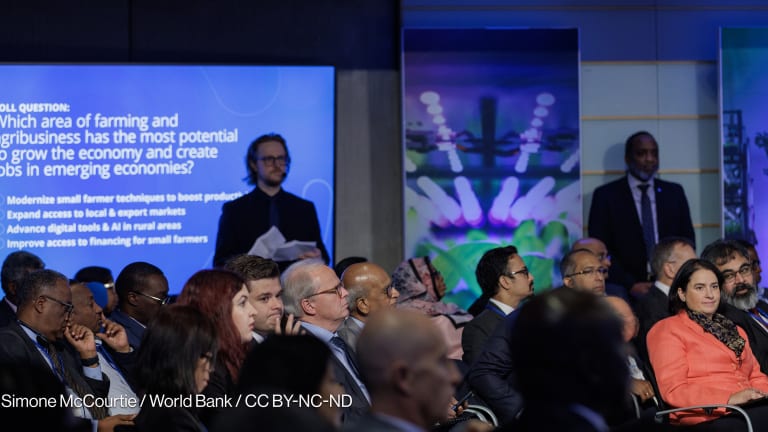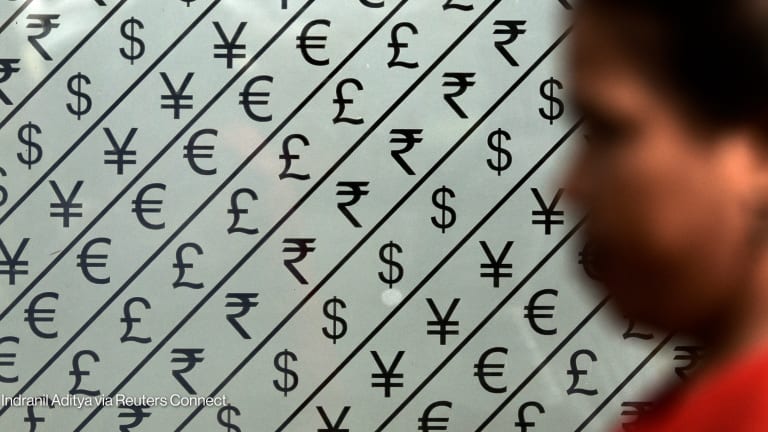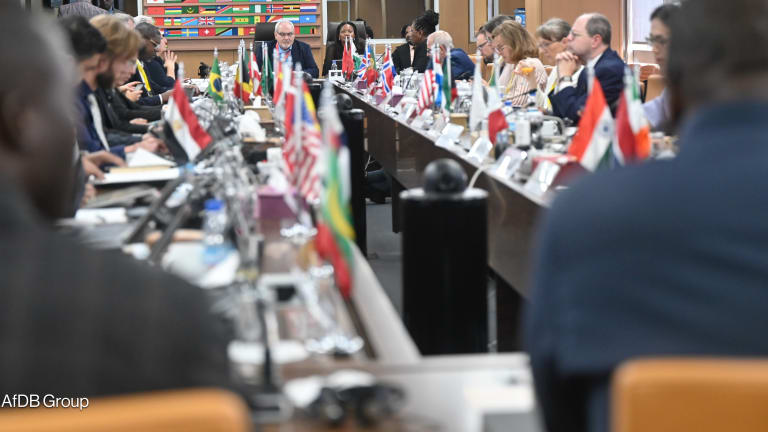
EDITOR’S NOTE: The World Bank’s new vision to fully eradicate extreme poverty by 2030 needs a change in the relationship between the bank’s borrowers and its non-borrowing shareholders, writes Scott Morris, visiting fellow at the Center for Global Development.
I have a goal of running a faster marathon at 47 than I did at 27. It helps that I wasn’t exactly a world class runner twenty years ago, and I still have a few years to reach my goal. But if you wanted to place a bet on me, you would probably want to know what my plan is for getting there. Which is why most people have greeted the World Bank’s new goals (eliminating extreme poverty, and raising the incomes of the bottom 40%) with polite applause immediately followed by a skeptical “ok, but what’s the strategy going to look like?” After all, as CGD colleague Owen Barder has noted, this isn’t the first time goals of this sort have been articulated on the world stage. World Bank management will be working intensively in the months ahead to have a strategy ready for the bank’s annual meetings in October that will try to dispel this skepticism.
Before I’m willing to bet on the bank’s success, I’ll be looking for a strategy that reflects a new bargain between the bank’s borrowers and its non-borrowing shareholders, because if the bank is truly going to hold itself accountable for meeting its new goals, then it needs a shift in the thinking of these two groups. Let’s start with the non-borrowers, and in particular the United States. For many years, the US government and the US Congress viewed the bank largely through the IDA lens, providing billions of dollars through IDA replenishments and focusing intensively on the way IDA does business. The IBRD, IFC, and MIGA were largely out of sight, out of mind. It was politically uncomfortable in the United States (and a number of other developed countries) that these arms of the bank were heavily engaged in the large emerging market countries, particularly China. But the non-IDA parts of the bank did not require any regular financing from its shareholders, so critics in the developed world lacked a hook to challenge these engagements. This changed during the post-Lehman crisis response when the Obama administration went to Congress with a request to provide new capital to the IBRD as well as the regional development banks. The good news is that the request was ultimately approved. The bad news is that there continues to be strong resistance to an ambitious World Bank role in the so-called middle income countries. Yet, one of the implicit strategic elements of the newly adopted goals is to double down in some of these very countries. For example, India may be graduating from IDA as a middle income country, but it also is home to the largest population of the world’s poor. So the World Bank will not meet its own goals without making progress in India. To meet its goals, the bank will need a more flexible stance from the United States and the other non-borrowers in a number of areas. Here are a few candidates: 1. Rather than once-in-a-generation capital increases, these shareholders might need to consider more routine infusions of capital. Today’s low interest rates have already dampened the bank’s earlier projections for its ability to lend over the next decade. It’s conceivable that one element of a long term strategy would be to replace the long standing replenishment model with a routine shareholder review of all of the bank’s resource needs, so that what was previously an IDA replenishment becomes a World Bank Group replenishment. This of course would be a more complex undertaking than what currently exists, but the EBRD (and IDA itself) already provides a model for routine shareholder review of capital needs and policy goals. By the way, this doesn’t necessarily mean more money from the shareholders, just a different mix. Certainly from a donor perspective, IBRD capital infusions are a bargain compared to the grant contributions to IDA. Just compare the $187 million a year for the US contribution to IBRD, which leverages about $15 billion a year in IBRD programming, to the $1.5 billion provided annually to IDA, which also leverages about $15 billion a year in IDA programming. 2. Rather than rigid silos that ring fence IDA contributions for IDA countries, shareholders might need to consider more fluid mixes of concessional IDA-like resources alongside the harder terms of IBRD loans or the IFC’s private investments across the range of the bank’s clients. 3. And of course, no small amount of flexibility in the stance of the non-borrowers will be needed to make the next round of World Bank voice and vote reform a success. And what should the US and other non-borrowers expect from the borrowers (and the bank) in return for this more flexible stance? Again, it’s implicit in the new strategy and reflected in the long-standing donor approach to IDA: a higher degree of accountability for meeting poverty reduction goals in all of what the IBRD, IFC, and MIGA do. The bank can commit itself to a host of new accountability measures in this regard, but its clients hold the key. It’s not enough for these countries, and particularly the largest IBRD borrowers, to simply view the bank as a credit cooperative, with no questions asked about the development impact of their proposed projects. At present, there are too many instances of discriminatory treatment within the bank, with intensive scrutiny of the $50 million that might comprise all of a small IDA country’s program, while a $1 billion loan to prop up a poorly run state bank in one of the large IBRD countries escapes any consideration of development impact. Let me be clear that I don’t mean a heavy handed bank approach in these countries when it comes to traditional bank safeguards. There are many ways in which the World Bank can and should be more nimble and client friendly while continuing to meet the objectives of these safeguards. But the bank should be asking for more, particularly in its IBRD and IFC projects, when it comes to demonstrating impacts that contribute directly to the new goals. The bank’s newly announced partnership strategy with India is an encouraging sign that things might be moving in the right direction in at least one of these countries, with a much more deliberate focus on poverty reduction by shifting support more toward the country’s low income states. More flexibility from the non-borrowers, more accountability from the borrowers. Both are already implicit in the new goals. Will they materialize in the strategy? If so, will the shareholders step up and meet their ends of a new bargain? I hope so. I also hope my knees hold out for a few more years of running. Edited for style and republished with permission from the Center for Global Development. Read the original article.








